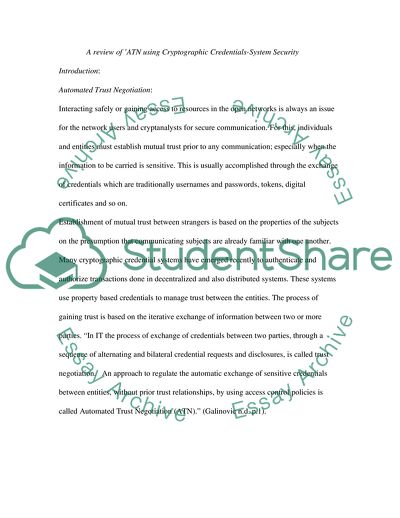Cite this document
(Automated Trust Negotiations Using Cryptographic Credentials-System Term Paper, n.d.)
Automated Trust Negotiations Using Cryptographic Credentials-System Term Paper. Retrieved from https://studentshare.org/information-technology/1737904-a-review-of-atn-using-cryptographic-credentials-syatem-security
Automated Trust Negotiations Using Cryptographic Credentials-System Term Paper. Retrieved from https://studentshare.org/information-technology/1737904-a-review-of-atn-using-cryptographic-credentials-syatem-security
(Automated Trust Negotiations Using Cryptographic Credentials-System Term Paper)
Automated Trust Negotiations Using Cryptographic Credentials-System Term Paper. https://studentshare.org/information-technology/1737904-a-review-of-atn-using-cryptographic-credentials-syatem-security.
Automated Trust Negotiations Using Cryptographic Credentials-System Term Paper. https://studentshare.org/information-technology/1737904-a-review-of-atn-using-cryptographic-credentials-syatem-security.
“Automated Trust Negotiations Using Cryptographic Credentials-System Term Paper”. https://studentshare.org/information-technology/1737904-a-review-of-atn-using-cryptographic-credentials-syatem-security.


